French Travel Memories 2 - Daniel in Aix-en-Provence
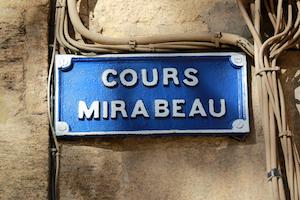 Visiting the South of France? Then try to include Aix-en-Provence and make your own travel memories there - maybe in the Cours Mirabeau.
Visiting the South of France? Then try to include Aix-en-Provence and make your own travel memories there - maybe in the Cours Mirabeau.
As you play our travel-story based language courses, you'll follow a young traveler through several main cities in each country. And – if you visit these cities yourself – you'll discover that the travel-stories' street names, places, restaurants, hotels, etc. all exist. We visited many of them and took pictures.
Our French traveler Daniel flew into Paris, which was the topic of our first French Travel Memory post. After Paris, Daniel's next stop is in Aix-en-Provence, a picturesque city located in the south of France, about 20 miles north of Marseille. In Aix-en-Provence, Daniel looks up a French friend he had met earlier during his studies in Boston.
In our travel-story course, you learn daily conversational language. The vocabulary listed here is a combination of some words taught in the course as well as other useful terms. Often referred to as a city of art and history, Aix sports beautiful gardens, picturesque fountains, historic buildings, and the remains of Roman baths.
You can find specific events for your travel dates on the Tourist Office website, and more information in books and travel guides. We'll just mention a few quick facts and list some basic terms in French that will help you in your travels.
A FEW QUICK FACTS ABOUT AIX-EN-PROVENCE
Aix-en-Provence is a city-commune (or, incorporated municipality) located in the region of Provence, in the department of Les Bouches-du-Rhone. In 2014, it counted a population of 142,149.
The region of Provence gets its name from the Romans. By the end of the second century BC, the region of Provence was part of the first Roman "province" beyond the Alps. Aix-en-Provence had its beginnings in 122 BC as a Roman town. During the breakdown of the Roman Empire and beyond, the town survived numerous battles, periods of occupation, and repeated plundering.
From 879 until 1486, Provence was a semi-independent state ruled by the Counts of Provence. During that time, Aix-en-Provence became its capital and an artistic and intellectual center. In 1487, Aix-en-Provence passed to the crown of France, together with the rest of Provence.
1. Useful terms for Travelers
• le Midi - the Midi, South of France (colloquial)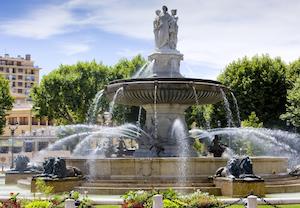
• les jardins - the gardens
• les fontaines - the fountains
• les ruines romaines - the Roman ruins
• la commune - the town, municipality
• la capitale - the capital
• ville d'art et d'histoire - city of art and history
RUE MAZARINE
Daniel's friend Pierre lives in the Mazarin district on rue Mazarine, a street that runs parallel to the popular and lively Cours Mirabeau (more below). The "quartier Mazarin" was developed in the 17th century by the then ruling archbishop Michel Mazarin.
Located in the south of Aix-en-Provence, this elegant neighborhood is known for its numerous "hôtels particuliers" (grand townhouses), built for the nobility, army officers, politicians, and the newly wealthy merchant class.
FRENCH TRAVEL MEMORIES WITH PAUL CÉZANNE
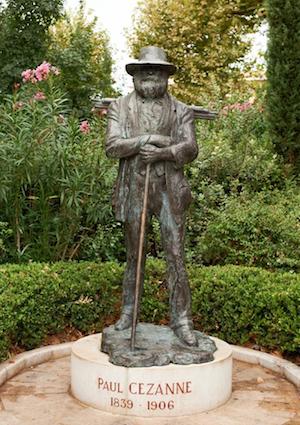 The painter Paul Cézanne (1839-1906) was born and grew up in Aix-en-Provence. His father, co-founder of Banque Cézanne et Cabassol, was a successful banker. For several years the young Cézanne studied law and worked in his father's bank.
The painter Paul Cézanne (1839-1906) was born and grew up in Aix-en-Provence. His father, co-founder of Banque Cézanne et Cabassol, was a successful banker. For several years the young Cézanne studied law and worked in his father's bank.
At the same time, however, he was also enrolled at the École des Beaux-Arts in Aix and envisioned a career in the arts. At age 21, Cézanne left for Paris and for the life of a struggling artist. Read more about Cézanne's struggles and artistic development.
Throughout his life, Cézanne came back to Aix frequently and finally settled there again during his later years. Café Clément, where Cézanne often went to meet friends, was at 44 Cours Mirabeau.
The bank Cézanne's father founded, Banque Cézanne et Cabassol, was on 24, rue des Cordeliers. It is now the location of a property management company.
In Aix-en-Provence, you can visit Cézanne's atelier: 9 avenue Paul Cézanne. It's about a 30-minute walk to the north of the town. That's where he worked every day from 1902 until his death in 1906.
2. Useful terms for Travelers
• l'atelier - the atelier, artist's workshop
• le peintre - the painter
• le tableau - the painting, picture
• la peinture – the paint, painting
• la banque – the bank
• le banquier - the banker
• travailler - to work
LE COURS MIRABEAU
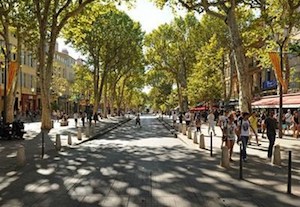 The Cours Mirabeau is a wide boulevard built in 1649 along the southern ramparts of the city. To the south of this lively street lies the quartier Mazarin (see above). The Cours Mirabeau is lined with restaurants, cafés, stores, bookshops, movie theaters, and beautiful fountains. (see picture)
The Cours Mirabeau is a wide boulevard built in 1649 along the southern ramparts of the city. To the south of this lively street lies the quartier Mazarin (see above). The Cours Mirabeau is lined with restaurants, cafés, stores, bookshops, movie theaters, and beautiful fountains. (see picture)
The popular café "Les Deux Garçons" - frequented by the writer and filmmaker Jean Cocteau, the philosopher and playwright Jean-Paul Sartre, as well as Paul Cézanne - is at number 53 Cours Mirabeau. It was built in 1660 and is the oldest café in Aix-en-Provence.
3. Useful terms for Travelers
• le cours - the long avenue
• l'écrivain - the writer, author
• le cinéaste - the filmmaker
• le philosophe - the philosopher
• le dramaturge - the playwright
CATHÉDRALE SAINT SAUVEUR
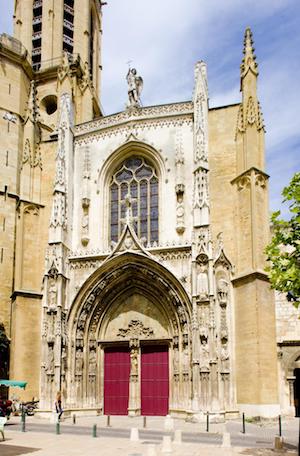 The cathedral in Aix-en-Provence was first built in the 12th century on the site of a pre-Roman pagan temple and later Roman temple of Apollo. In the following centuries, the cathedral underwent several more phases of construction.
The cathedral in Aix-en-Provence was first built in the 12th century on the site of a pre-Roman pagan temple and later Roman temple of Apollo. In the following centuries, the cathedral underwent several more phases of construction.
Now a national monument of France, the building is an interesting combination of Roman, Romanesque, Gothic, Baroque, and Neo-gothic architectural styles.
Noteworthy are the Gothic portals, the Bell Tower (started in 1323), the Romanesque Cloister, as well as the interior of the church.
OTHER PLACES TO VISIT
Besides strolling through the streets of old Aix-en-Provence with its stunning architecture, its markets and shops, the Hotel de Caumont centre d'art is worth a visit (located in a "hôtel particulier").
Also of interest are short tours into the surrounding countryside. First on the list may be the neighboring Montagne Sainte-Victoire, a frequent subject of Cézanne's paintings.
And, if you are visiting during the summer months, don't miss a tour to Provence's lavender fields.
SOME ADVICE
As you're making your travel memories, you'll notice that Aix-en-Provence has an atmosphere that is reminiscent of Paris.
In the summer you may enjoy "Musique dans la rue" or one of the many "Festivals" and art exhibitions; or join the fashionable Aixois sipping an expresso or an apéritif on one of the terraces of the Cours Mirabeau cafés.
The old town center of Aix-en-Provence is now a pedestrian zone with large parking lots around the perimeter. So, if you travel by car – use one of those lots and don't even try to drive into the town center!
Bio: Ulrike Rettig is the co-founder of GamesforLanguage.com. She is a lifelong language learner, growing up in Austria, the Netherlands, and Canada. You can follow her travel memories on Facebook, Twitter and Instagram, and leave any comments with contact or below.
